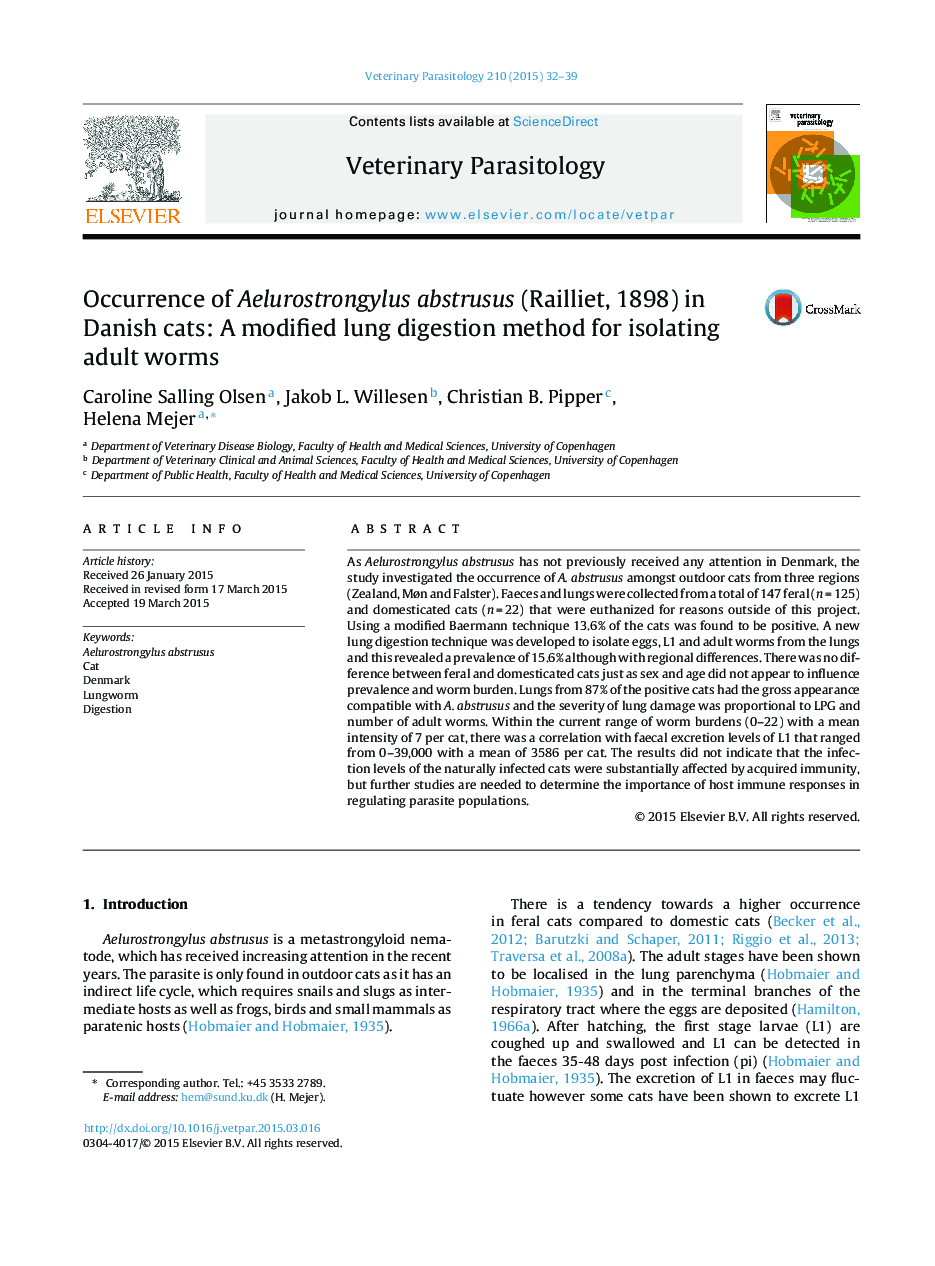| Article ID | Journal | Published Year | Pages | File Type |
|---|---|---|---|---|
| 5802635 | Veterinary Parasitology | 2015 | 8 Pages |
â¢Using a modified Baermann technique 13.6% of the cats was found to be positive.â¢A new lung digestion technique was developed to isolate eggs, L1 and adult worms from the lungs and this revealed a prevalence of 15.6%.â¢Lungs from 87% of the positive cats had the gross appearance compatible with A. abstrusus.â¢The severity of lung damage was proportional to LPG and number of adult worms.
As Aelurostrongylus abstrusus has not previously received any attention in Denmark, the study investigated the occurrence of A. abstrusus amongst outdoor cats from three regions (Zealand, Møn and Falster). Faeces and lungs were collected from a total of 147 feral (n = 125) and domesticated cats (n = 22) that were euthanized for reasons outside of this project. Using a modified Baermann technique 13.6% of the cats was found to be positive. A new lung digestion technique was developed to isolate eggs, L1 and adult worms from the lungs and this revealed a prevalence of 15.6% although with regional differences. There was no difference between feral and domesticated cats just as sex and age did not appear to influence prevalence and worm burden. Lungs from 87% of the positive cats had the gross appearance compatible with A. abstrusus and the severity of lung damage was proportional to LPG and number of adult worms. Within the current range of worm burdens (0-22) with a mean intensity of 7 per cat, there was a correlation with faecal excretion levels of L1 that ranged from 0-39,000 with a mean of 3586 per cat. The results did not indicate that the infection levels of the naturally infected cats were substantially affected by acquired immunity, but further studies are needed to determine the importance of host immune responses in regulating parasite populations.
